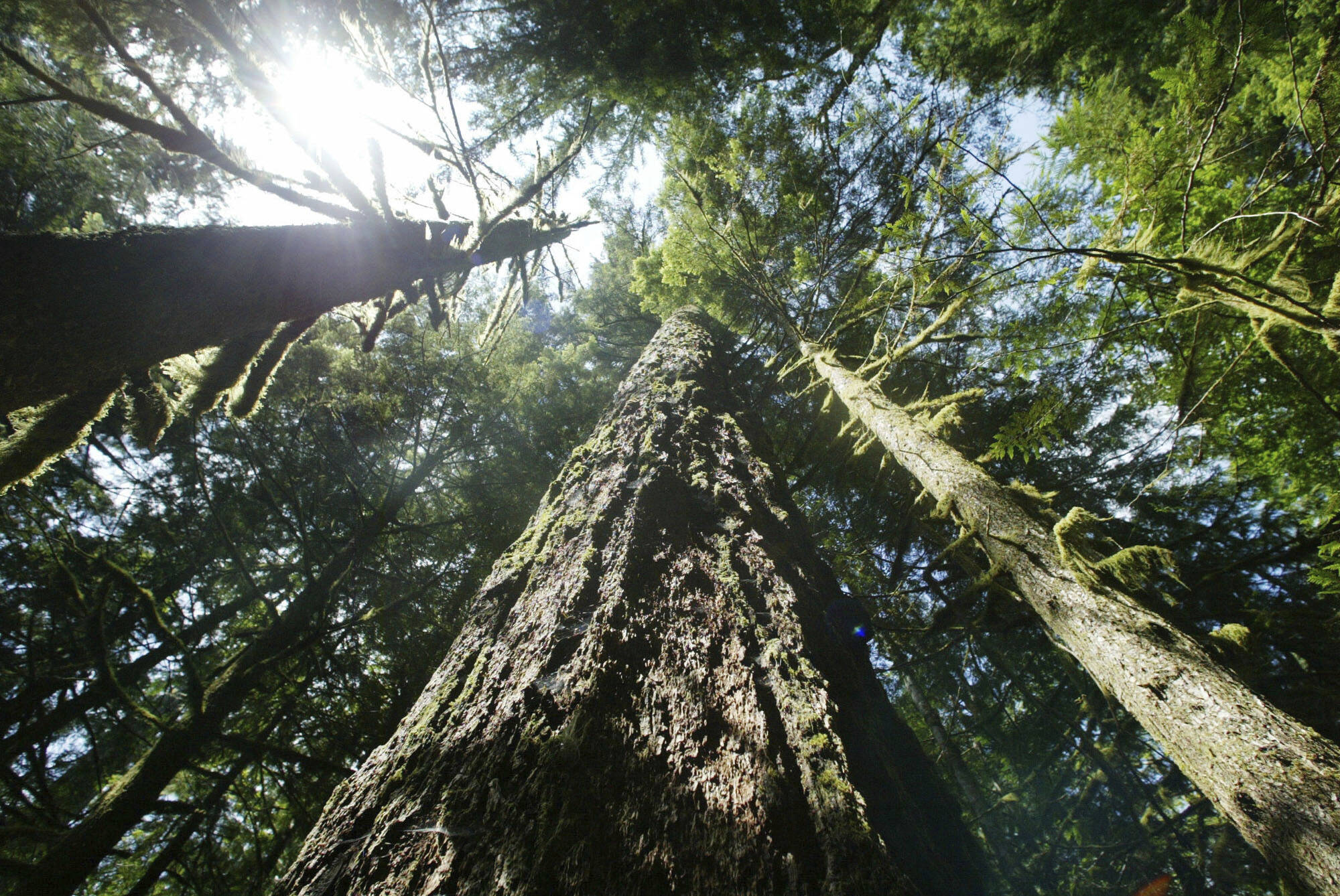BILLINGS, Mont. — The Biden administration has identified more than 175,000 square miles of old growth and mature forests on U.S. government land and plans to craft a new rule to better protect the nation’s woodlands from fires, insects and other side effects of climate change, officials said Thursday.
Results from the government’s first-ever national inventory of mature and old-growth forests on federal land were obtained by The Associated Press in advance of the public release.
U.S. Forest Service and Bureau of Land Management lands combined have more than 50,000 square miles of old growth forests and about 125,000 square miles of mature forests, according to the inventory.
That’s more than half the forested land managed by the two agencies, and it covers an area larger than California. Yet officials say those stands of older trees are under increasing pressure as climate change worsens wildfires, drought, disease and insects — and leaves some forests devastated.
Older forests “are struggling to keep up with the stresses of climate change,” said USDA Under Secretary for Natural Resources and the Environment Homer Wilkes. “We must adapt quickly.”
Environmentalists said they hoped the inventory and pending rule will lead to new restrictions on logging. But representatives of the timber industry and some members of Congress have been skeptical about President Joe Biden’s ambitions to protect older forests, which the Democrat unveiled last year on Earth Day.
[Biden administration reinstates Roadless Rule on Tongass]
They’ve urged the administration to instead concentrate on lessening wildfire dangers by thinning stands of trees where decades of fire suppression have allowed undergrowth to flourish, which can be a recipe for disaster when fires ignite.
Forest Service Chief Randy Moore appeared this week before a U.S. Senate committee where he was pressured by lawmakers from both sides of the aisle to speed up thinning work on federal forests.
Moore faced pointed questioning from U.S. Sen. John Barrasso of Wyoming, a Republican who warned the administration’s conservation efforts could “lock Americans out of the public lands” by putting areas off-limits to timber harvests and other uses.
Most old growth forests in the Lower 48 states were logged during the past two centuries. Previous protections for older trees have come indirectly, such as the “roadless rule” adopted under former President Bill Clinton in 2001 that blocked logging on about a quarter of federal forests.
“There’s a significant amount of mature and old growth trees that are already under protected status,” said Nick Smith with the American Forest Resource Council, a timber industry group. “We’re not calling for active management on environmentally-sensitive landscapes, but at least in areas where we can do thinning and wildfire mitigation fuels reduction. Federal land managers should already be doing that.”
Administration officials announced Thursday they will be soliciting comments for a proposed rule that would “adapt current policies to protect, conserve and manage national forests and grasslands for climate resilience.”
A formal rulemaking notice was expected to be published in the federal register in coming days. Further details were not immediately released.
Environmental groups had lobbied the administration to pursue new regulations for forests that would limit logging of older trees.
Blaine Miller-McFeeley with Earthjustice said he expects some logging would continue under a new rule, but conservation and recreational uses also would be promoted.
“We are still logging old growth and mature forests here at home,” Miller-McFeeley said. “The focus has been largely on the number of board feet (harvested). It has not been focused on which trees are most scientifically smart to bring down for climate, for community protection from wildfires.”
The age used to determine what counted as old growth varied widely by tree species – from 80 years for gambel oaks, to 300 years for bristlecone pines.
Most of the old growth and mature forests are in western states such as Idaho, California, Montana and Oregon. But they’re also in New England, around the Great Lakes and in southern states such as Arkansas, Kentucky and West Virginia, according to an online map posted by the Forest Service.
The most extensive old growth forests are dominated by pinyon and juniper trees and cover a combined 14,000 square miles, according to the inventory.
The inventory excluded federal lands in Alaska where an old growth analysis was ongoing.
Experts say large trees can store significant volumes of carbon dioxide and keep the gas from warming the planet as it enters the atmosphere.
Underlining the urgency of the issue are wildfires in California that killed thousands of giant sequoias in recent years. Lightning-sparked wildfires killed thousands of the trees in 2021, adding to a two-year death toll of up to nearly a fifth of Earth’s largest trees. They are concentrated in about 70 groves scattered along the western side of the Sierra Nevada range.
Global wildfires in 2021 emitted the equivalent of about 7.1 billion tons of carbon dioxide, according to the Copernicus Atmosphere Monitoring Service. That’s equal to about 18% of global CO2 emissions from coal, oil and other energy sources recorded in 2021 by the International Energy Agency.

